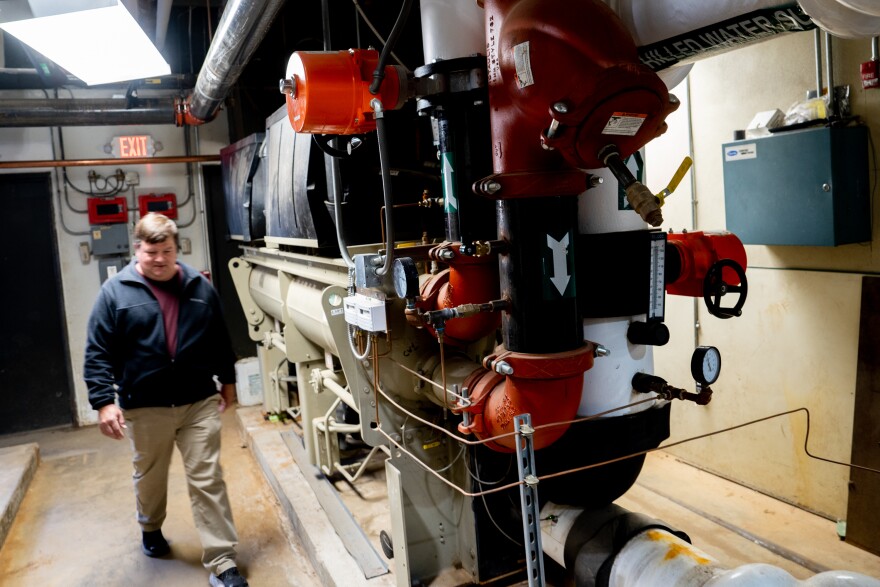Behind Parkway South High School on Wednesday, students were playing kickball on what looked like a normal, grassy field. But hundreds of feet below ground, a geothermal plant was using the Earth’s temperature to heat and cool the school.
That system is not something you would find at most schools in the U.S. Its uniqueness brought Maria Vargas, the Department of Energy's director of its Better Buildings Initiative, this week to recognize the Parkway School District.
The geothermal plant is one of many sustainability efforts in Parkway, including solar panels, LED lights and even district-wide composting. The district has also replaced roofs and upgraded insulation to make sure Parkway South is as efficient as possible.
“I'm here to see firsthand what they're doing at the school district that allowed them to be so aggressive and successful in reducing energy waste,” Vargas said.

The Parkway School District has been working to improve energy efficiency for years. It became part of the federal Better Buildings Challenge and met its goal of 25% energy use reduction in 2020. Now the district has set a goal of an additional 35% reduction by 2035.
The Parkway South High School building is the biggest school in the district and consumes a lot of energy. When an old chiller stopped working in 2016, the district decided to install the geothermal system. It also recently added solar panels to the building. Altogether, the district says Parkway South is saving more than $100,000 a year in energy costs compared to 2017. The geothermal project cost more than $2.4 million, but the district expects to continue the annual savings for the system’s lifespan, which is expected to be multiple decades.
Schools are the nation’s second largest sector of public infrastructure spending, behind roads and highways. Vargas hopes other districts will follow Parkway’s lead and take on similar projects.
“Investing in our schools, our school facilities, and our school buildings is not only a really important thing to do for our community, but it's an important investment that's going to last,” Vargas said.

Inside Parkway South, a big room is filled with equipment to operate the system. Senior Anushka Rawat points out pumps, compressors and radiators. Rawat is a senior taking AP Environmental Science. After graduation, she is headed to Stanford University.
“I want to pursue environmental policy and hopefully go to law school,” Rawat said.
Rawat’s teacher in the environmental science class, Russ Barton, said students have led the way throughout Parkway’s sustainability efforts.
“All this started with students,” Barton said. “We’ve asked for a lot of things, and the kids have actually gotten those to come through.”
Rawat wants to continue to lead in sustainability efforts. She hopes to eventually work on political solutions to environmental issues and says her time in Barton’s class inspired her to follow this path.
“I knew I wanted to do some sort of a STEM humanities mix because I've always loved politics, I've done various internships and worked on campaigns,” Rawat said. “Mr. Barton has been a huge part in me wanting to do environmental studies, because he really showed us how it's applicable to the world around us and how it's important for us to know what our future is going to hold.”





